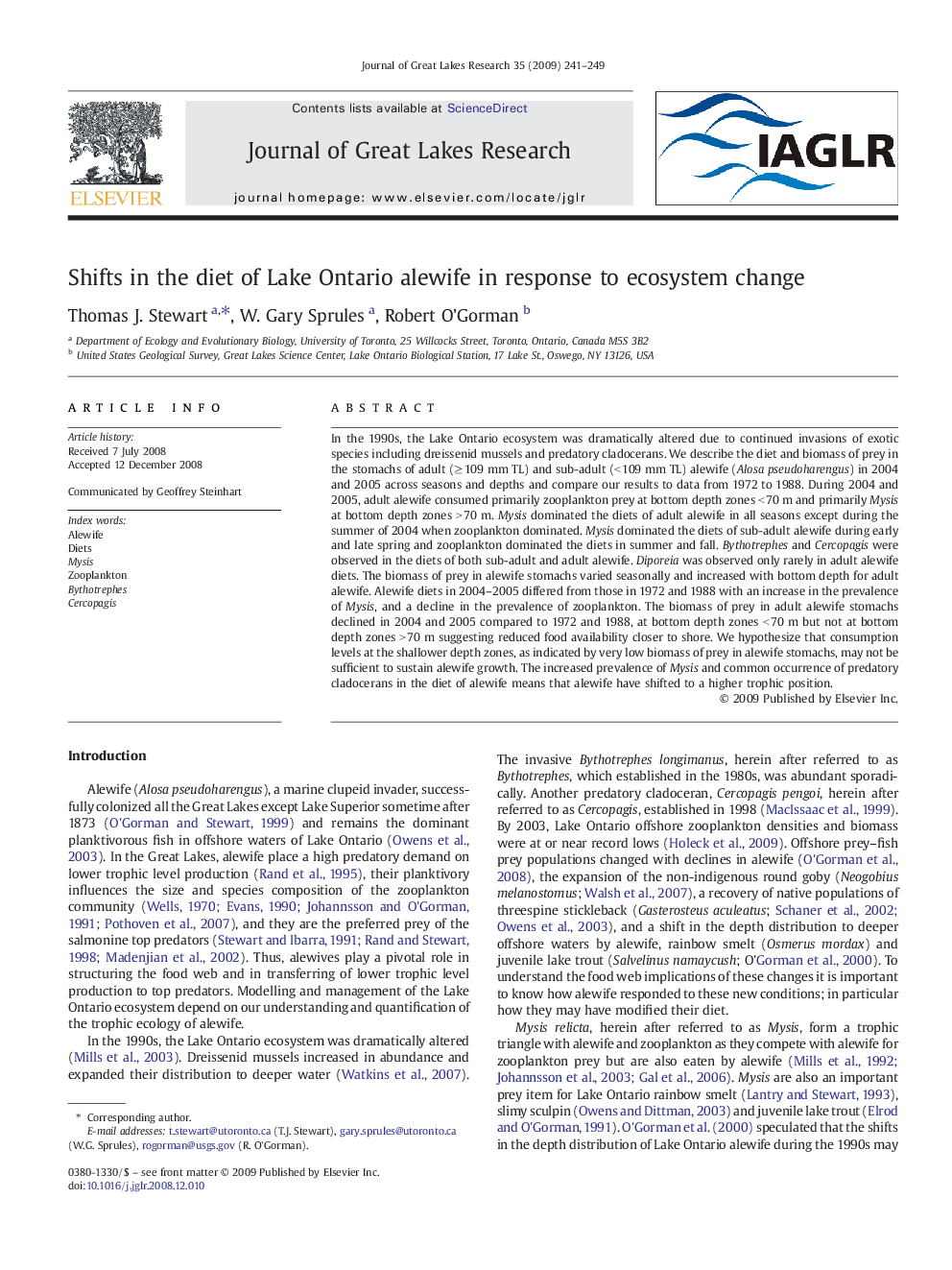| کد مقاله | کد نشریه | سال انتشار | مقاله انگلیسی | نسخه تمام متن |
|---|---|---|---|---|
| 4399366 | 1306733 | 2009 | 9 صفحه PDF | دانلود رایگان |
عنوان انگلیسی مقاله ISI
Shifts in the diet of Lake Ontario alewife in response to ecosystem change
دانلود مقاله + سفارش ترجمه
دانلود مقاله ISI انگلیسی
رایگان برای ایرانیان
کلمات کلیدی
موضوعات مرتبط
مهندسی و علوم پایه
علوم زمین و سیارات
علوم زمین و سیاره ای (عمومی)
پیش نمایش صفحه اول مقاله

چکیده انگلیسی
In the 1990s, the Lake Ontario ecosystem was dramatically altered due to continued invasions of exotic species including dreissenid mussels and predatory cladocerans. We describe the diet and biomass of prey in the stomachs of adult (â¥Â 109 mm TL) and sub-adult (< 109 mm TL) alewife (Alosa pseudoharengus) in 2004 and 2005 across seasons and depths and compare our results to data from 1972 to 1988. During 2004 and 2005, adult alewife consumed primarily zooplankton prey at bottom depth zones < 70 m and primarily Mysis at bottom depth zones > 70 m. Mysis dominated the diets of adult alewife in all seasons except during the summer of 2004 when zooplankton dominated. Mysis dominated the diets of sub-adult alewife during early and late spring and zooplankton dominated the diets in summer and fall. Bythotrephes and Cercopagis were observed in the diets of both sub-adult and adult alewife. Diporeia was observed only rarely in adult alewife diets. The biomass of prey in alewife stomachs varied seasonally and increased with bottom depth for adult alewife. Alewife diets in 2004-2005 differed from those in 1972 and 1988 with an increase in the prevalence of Mysis, and a decline in the prevalence of zooplankton. The biomass of prey in adult alewife stomachs declined in 2004 and 2005 compared to 1972 and 1988, at bottom depth zones < 70 m but not at bottom depth zones > 70 m suggesting reduced food availability closer to shore. We hypothesize that consumption levels at the shallower depth zones, as indicated by very low biomass of prey in alewife stomachs, may not be sufficient to sustain alewife growth. The increased prevalence of Mysis and common occurrence of predatory cladocerans in the diet of alewife means that alewife have shifted to a higher trophic position.
ناشر
Database: Elsevier - ScienceDirect (ساینس دایرکت)
Journal: Journal of Great Lakes Research - Volume 35, Issue 2, June 2009, Pages 241-249
Journal: Journal of Great Lakes Research - Volume 35, Issue 2, June 2009, Pages 241-249
نویسندگان
Thomas J. Stewart, W. Gary Sprules, Robert O'Gorman,